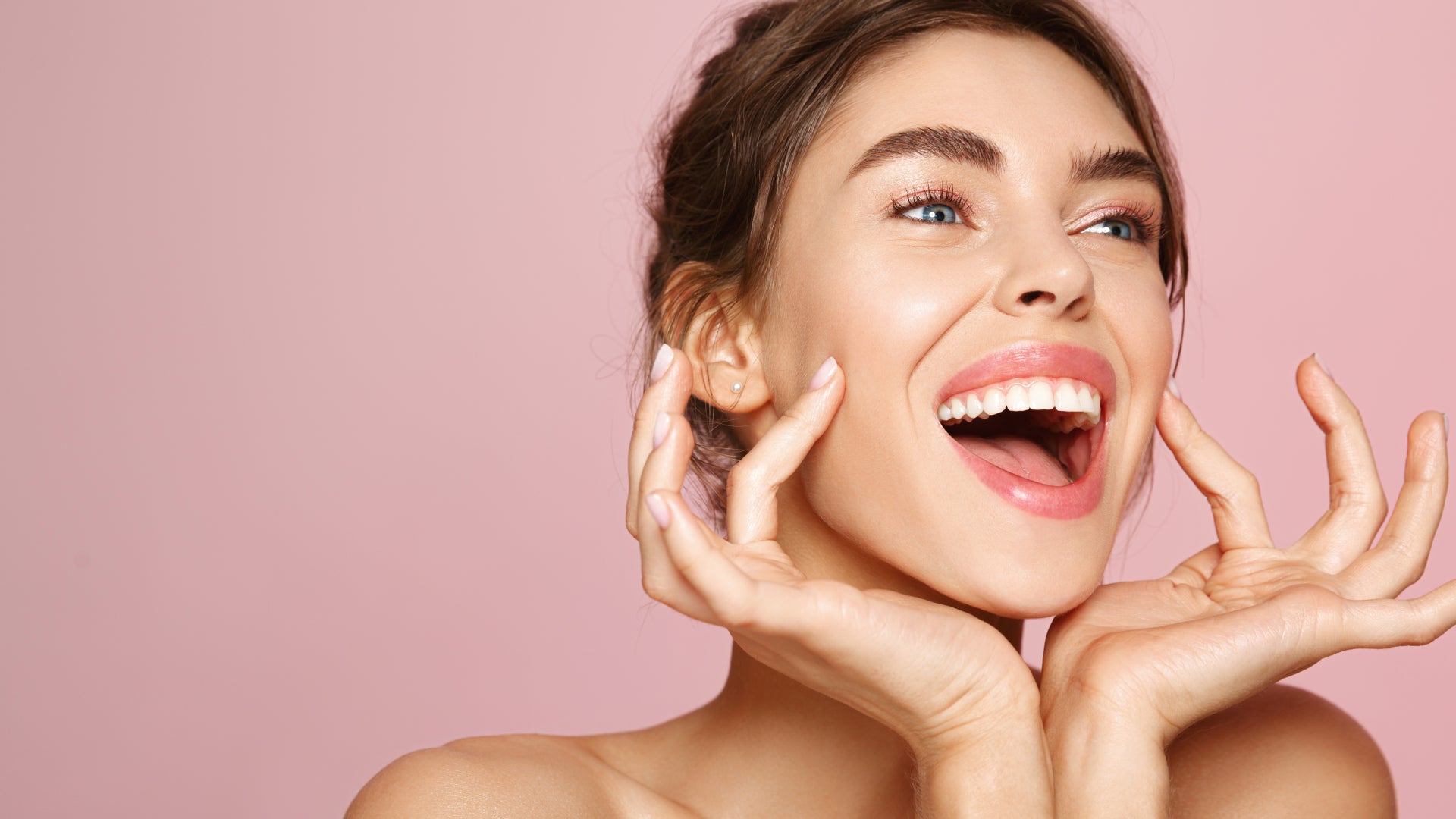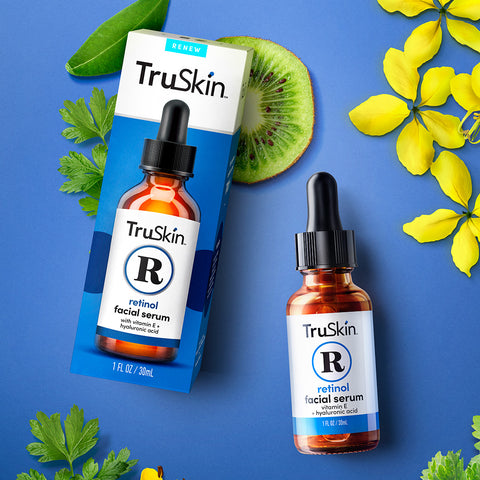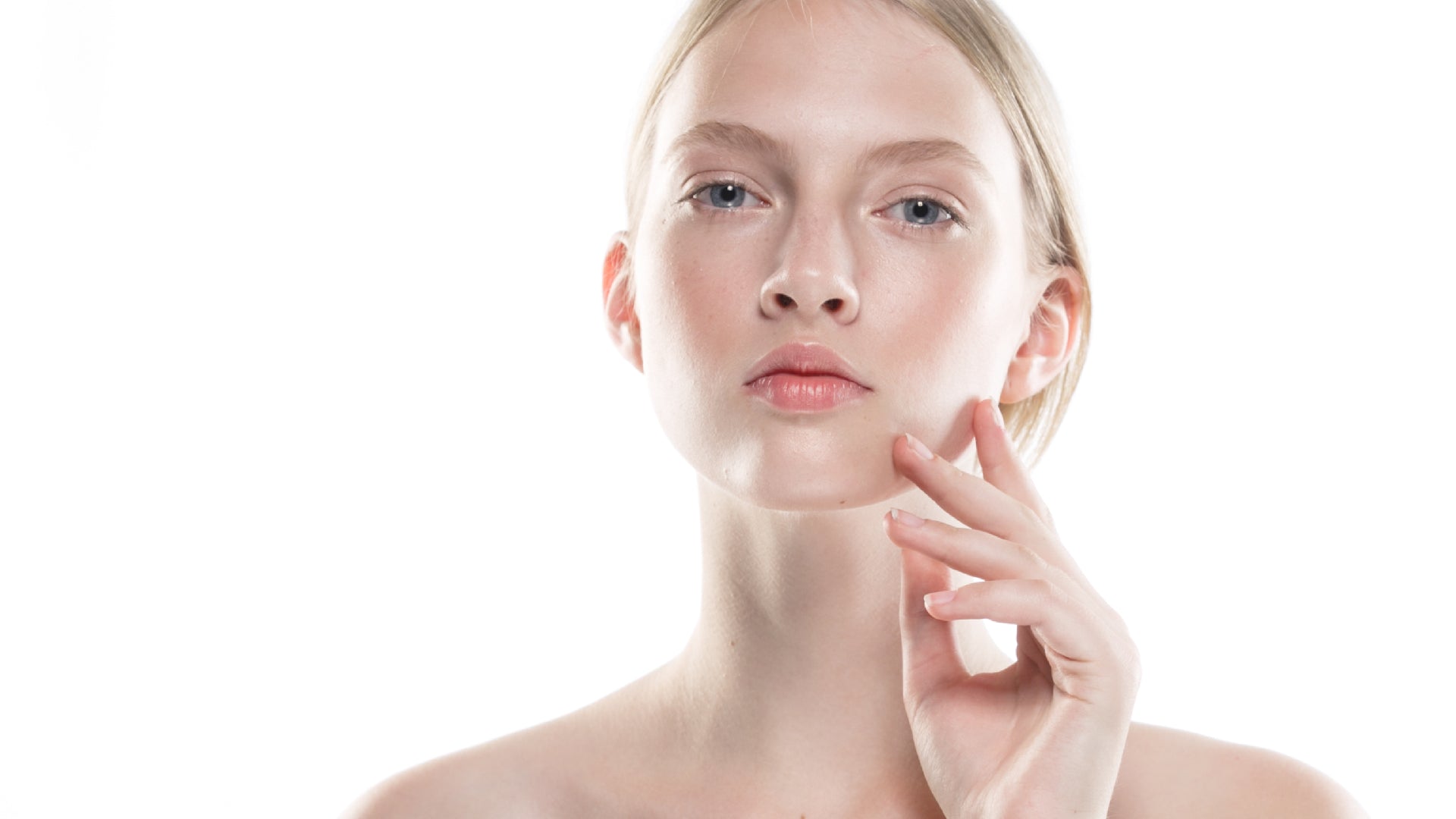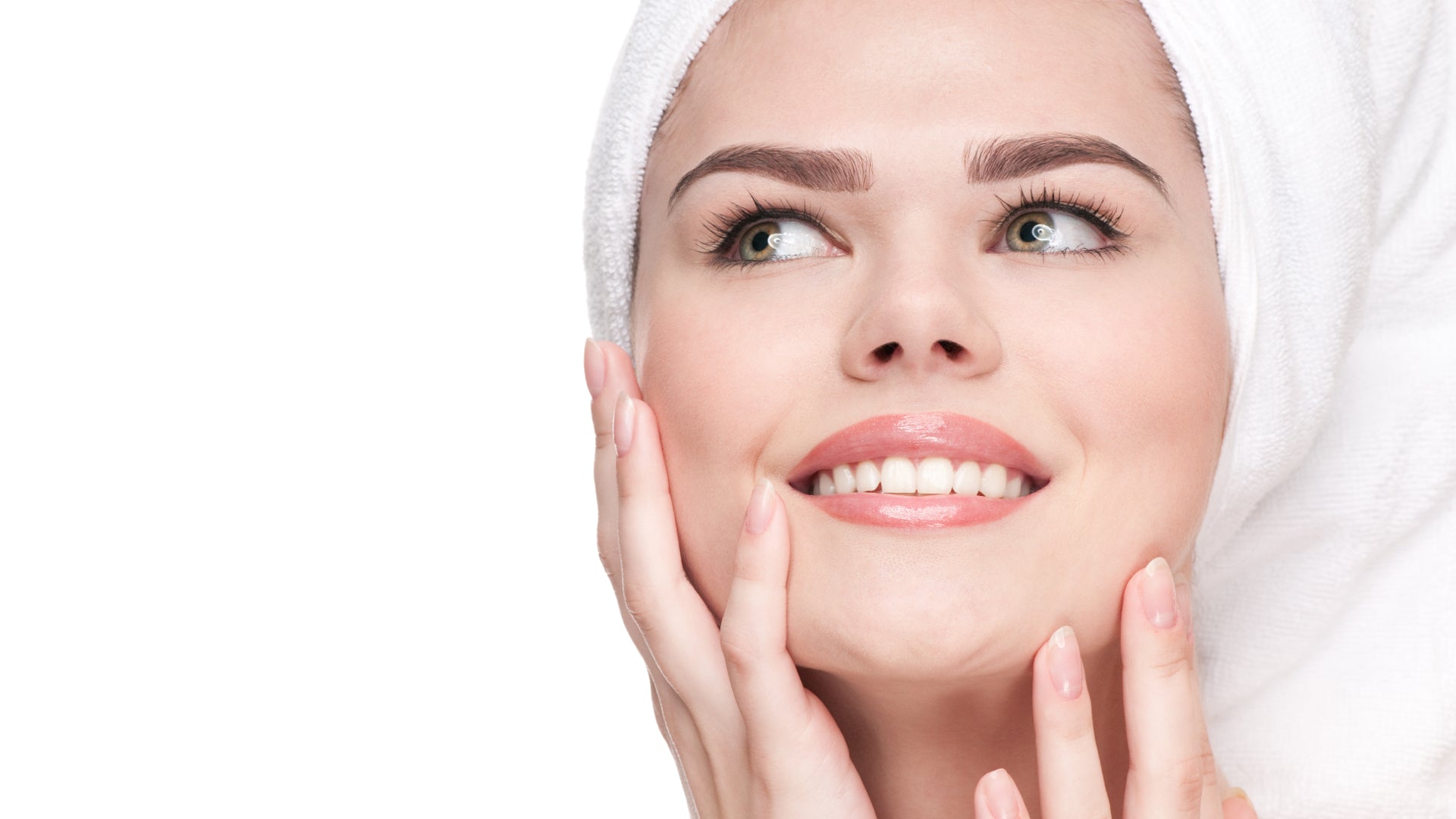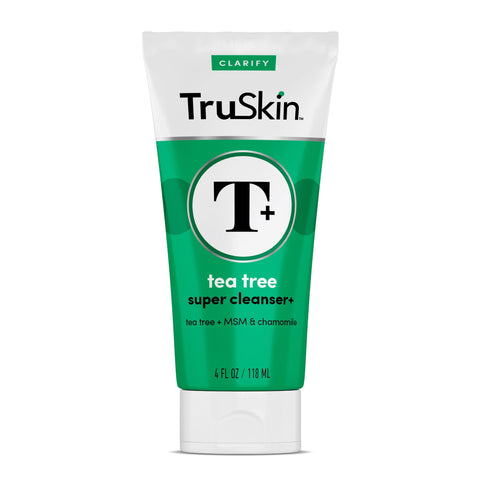
True Radical Honesty From Our Community
What To Do If You Hate Those Fine Lines Around Your Lips
Read MoreAdvice for all of your skin care needs
- all articles
- Acne
- Anti-Aging
- Collagen
- Combination Skin
- Company Announcements
- dry skin
- Exfoliation
- Eye Care
- Facial Redness
- Grooming
- Holidays
- Hyaluronic Acid
- Niacinamide
- Oily Skin
- Retinol
- Sensitive Skin
- Skincare
- Skincare Guide
- Skincare Ingredients
- Skincare Routine
- Skincare Tips
- Sun Protection
- Toner
- Vegan Skincare
- Vitamin C
- view all
- Acne
- Anti-Aging
- Collagen
- Combination Skin
- Company Announcements
- dry skin
- Exfoliation
- Eye Care
- Facial Redness
- Grooming
- Holidays
- Hyaluronic Acid
- Niacinamide
- Oily Skin
- Retinol
- Sensitive Skin
- Skincare
- Skincare Guide
- Skincare Ingredients
- Skincare Routine
- Skincare Tips
- Sun Protection
- Toner
- Vegan Skincare
- Vitamin C
-
Heard about retinol sandwiching but clueless about what it is or whether you should be getting on that train immediately? Here’s what we know…
Retinol offers an incredible solution to many skin woes. Hate your monthly breakouts? Try retinol. Worried about wrinkles catching up on you way too quickly? Retinol’s your guy. It’s true, retinol is the gold standard in skincare ingredients – just ask your dermatologist; we’d put a lot of money on them being in complete agreement.
But retinol isn’t all moonlight and roses. In fact, many people find that it’s pretty devilish on their skin, causing all sorts of irritating side effects that, frankly, make it not worth the hassle. You know the score, think redness, itching, flaky skin and extreme dryness.
This is why you’ll see countless blog posts and viral videos about how best to make retinol work for your skin type without causing all the bad stuff. Spoiler alert: if you choose the right formulation and apply it slowly and carefully, most skin types can totally appreciate the benefits retinol has to offer.
Reckon you’ve tried all the tricks but still can’t get on with retinol on a regular basis? Then you have options. The first is to try bakuchiol which is a natural and far gentler alternative to retinol. We’re huge advocates of this just-as-awesome ingredient as it works in a similar way to retinol, encouraging cell turnover and accelerating collagen production. In fact, we love it so much that we based an entire collection of healthy aging formulations around it. Check out the range here.
The other options is to try retinol sandwiching, a ‘trend’ that #BeautyTok is all over, but one which, in fact, has been around for many years…
What Is Retinol Sandwiching?
Retinol usually comes in the form of a serum which is applied to cleansed skin before moisturizer. Retinol sandwiching, however, switches things up. Don’t worry though, it’s nothing too tricky but is a very easy technique. You simply apply moisturizer before your retinol serum, then another layer afterwards, creating the proverbial sandwich effect with the retinol being your filling and moisturizer the bread.
Why Is Retinol Sandwiching A Thing?
As skincare ingredients go, retinol is arguably the best but, as we previously mentioned, its benefits are often outnumbered by its downsides – especially if you have particularly sensitive skin. Of course, introducing it slowly into your skincare routine is a great way to reduce the risks of unwanted side effects because this allows your skin to acclimate to such a potent powerhouse.
And there are many other ways to help you reduce irritation. One of which is the retinol sandwich.
Not to be taken literally (please don’t smother retinol serum over your favorite sourdough – like, ever), retinol sandwiching is particularly good for dry skin but can be a useful tool for reducing all kinds of irritation and sensitivities.
Why is the retinol sandwich so good for the skin? Well, it creates a kind of buffering effect, adding a layer of product between your skin and the retinol which helps to slow down its absorption and reduce its potency. Not to mention the added moisturization as an extra bonus. All this means that you’ll likely be able to use your retinol serum more frequently.
Does Sandwiching Make Retinol Less Effective?
Yes. Most moisturizers contain oils and water which kind of ‘dilute’ the retinol, making it weaker and less effective. But if you’re choosing to make yourself a retinol sandwich, you’re probably doing so because you have sensitive skin and want to reduce the irritation it may potentially cause. So making it weaker is kind of the point, right?
Is Retinol Sandwiching Right For Your Skin Type?
Honestly? That’s a question only you can answer. The truth is, if you use it wisely, most retinol formulas can be successfully built into your skincare routine without the sandwich method. That being said, nobody knows your skin better than you, so if you feel it may help you to enjoy the benefits of retinol, there’s no harm in trying.
All we can say is that if you want to give it a go, make sure to choose the right moisturizer for the job. Here’s a quick checklist for you.
✅ Go for a lightweight lotion. This will be better than a rich, heavy cream because it will at least allow a little of the retinol to get through to the surface of your skin.
❎ Avoid moisturizer that contains potent, active ingredients. Certain ingredients may react with the retinol and actually increase your chances of redness and irritation.
✅ Look out for gentle hydrating ingredients. Things like hyaluronic acid, glycerin and aloe vera are your friends here.
Other Tips For Making Retinol Work For You
1. Always Patch Test Retinol First
Yes, patch testing is boring and certainly not for the impatient, but it’s important and a great way to know whether a certain ingredient is going to be the right match for your skin. Patch test any new retinol product on a discreet area of your skin first. Then leave it for 48 hours to check for adverse reactions before using it as recommended.
2. Use It On Dry Skin
Many ingredients play well on damp skin but moisture can increase the absorption of retinol, simultaneously increasing the chances of irritation. Better to be safe by applying it to skin that's dry.
3. Go Slow And Go Steady
We’re all about the 1-2-3 retinol rule. When starting out, apply your product once a week only, for one week. Then apply it twice a week for two weeks and finally, go for three times a week for three weeks. This helps your skin build tolerance and allows you to eventually be able to apply it every night.
4. Apply Sunscreen Every Morning
Don’t let damaging UV radiation screw up all that fresh new skin retinol is helping to bring to the surface. Generously apply SPF 30 Mineral Sunscreen every morning as the final step in your routine.
But you knew that. Didn't you? DIDN'T YOU?
The Pros & Cons Of Retinol Sandwiching
read more -
One wish: to enjoy the tight, gravity-defying skin of 20 years ago. Sadly, it’s not going to happen, so the next best thing? Skincare ingredients that boost collagen and help your skin appear subtly firmer and just a tad more lifted.
Let’s get one thing straight: skincare cannot perform miracles. We’d love to be able to tell you that our new Caffeine Facial Serum can give you the skin of someone 30 years your junior or that our Vitamin C Gentle Face Scrub will eradicate every single one of your much-loathed dark spots after just one use. But we’d be lying. Skincare is awesome, absolutely. And yes, it can 100 percent help to subtly improve the appearance of acne breakouts, wrinkles and aging skin. But it has its limits. And knowing that your favorite moisturizer or prized facial serum can only do so much is crucial. Otherwise, you will always be disappointed. And that’s not what we want for you.
OK, so now this bombshell is out of the way and you understand that skincare ingredients aren’t going to give you an instant facelift or smooth out your laughter lines like fillers or Botox, here’s what they can do.
Choose the right formulation, crafted with thoughtful, clinically-proven ingredients, and skincare can very much improve the look, feel and health of your skin. And if you’ve ever woken up after trying a new serum for the first time, only to be greeted in the mirror by visibly brighter skin, you’ll know exactly what we’re talking about.
So, which ingredients should you pin your hopes on if you’re specifically looking to lift and firm sagging skin? Well, skin starts to go south because of dwindling collagen supplies so boosting collagen production is your first and best bet. Bearing in mind everything we’ve just said about managing expectations, therefore, here are five topical favorites we believe are the most effective for encouraging healthy collagen and helping you on the road to firmer, more toned skin.
1. Peptides
Without blinding you with science, peptides are chemical compounds made from amino acids. They’re very similar to proteins, but where proteins are large molecules made up of long chains of amino acids, peptides are their baby cousins, containing much shorter chains. Why is this of interest? Because due to their similarity, peptides have the smart ability of being able to penetrate the skin where they work like little messengers, signaling for your cells to produce more proteins. And which protein is most abundant in your skin? Yes, you got it, collagen.
In simple terms, applying topical peptides encourages your cells to keep on producing collagen (and elastin, for that matter), thus helping to counteract the skin’s inevitable loss of this vital protein and staving off all that comes with it – namely wrinkles, lines and sagging skin.
Try: Firming Collagen Day Lotion which contains vegan collagen peptides, amongst other skincare powerhouses like ceramides, green algae, vitamin E and aloe.
2. Retinol
When it comes to boosting your skin’s supply of healthy collagen very few topical ingredients trump retinol. Ask your derm or any skincare expert and we bet 1,000 bucks they will agree. So, what makes it so darn good? Well, it’s been studied for decades and it never fails to deliver the same skin-regenerating results. You see, retinol has an innate ability to communicate with your skin at a deep cellular level to encourage a speedier production of collagen and elastin in a bid to heal and strengthen your skin. Simple as. Well, it’s not that simple, but that’s all you really need to know.
Of course, retinol isn’t for everyone – it’s so good, it can be a tad irritating for some skin types – but if you used it slowly and carefully, always patch testing it first, you’ll find it can be a fantastic way to help keep your skin firm and youthful-looking for years to come.
Try: Retinol Facial Serum which has been formulated with hyaluronic acid and vitamin E, helping it to be as gentle on your skin as possible.
3. Bakuchiol
If retinol isn’t for you but you’re looking for something that does almost the exact same thing and offers very similar results, allow us to introduce you to bakuchiol.
One of the newest ingredients to the skincare world (but an absolute keeper unlike other ridiculous ingredients that are all fluff and no function), bakuchiol is nature’s best alternative to retinol. How so? Because it works just like its long-running counterpart, stimulating collagen synthesis and accelerating cellular turnover at a deep, below-the-surface level.
Bakuchiol is extracted from the seeds and leaves of the babchi plant and has been used for centuries in Chinese and Ayurvedic medicine. The reason it’s gained such momentum in Western skincare recently is that, granted, it's very similar to retinol, but more importantly it comes with way fewer unwanted side effects. Of course, its gentle nature means it works more slowly but if you sensitive skin and have patience, bakuchiol is a great choice for fighting the visible signs of aging –including sagging skin but certainly not stopping there!
Try: Rejuvenating Longevity Serum which combines bakuchiol with antioxidant-rich lingonberry stem cells and snow algae.
4. Vitamin C
If you don’t know by now how awesome vitamin C is then we’ve been doing something wrong! In our minds, this antioxidant wonder kid can do no wrong.
Like retinol, vitamin C is one of the most trusted and clinically-proven ingredients in the entire world of skincare. It’s known mainly for providing brightening benefits but never forget what an excellent antioxidant it is, offering the absolute best in environmental protection by neutralizing free radicals before they get a chance to destroy collagen – and believe us, that is exactly what free radicals will do if you don’t get in there first.
But it's not just vitamin C's antioxidant prowess that’s crucial for preventing collagen and elastin breakdown. Its highly acidic nature also works hard to boost your collagen and elastin levels. So there’s that.
Try: Vitamin C Deep Hydration Night Cream which gives your skin a delicious overnight boost of protective vitamin C, along with skin-loving botanical oils like jojoba, rosehip and evening primrose.
5. MSM
Sure, we’re all about vitamin C for president here at TruSkin, but another of our skin-firming favorites comes in the form of methylsulfonylmethane, or MSM to friends like you.
Very well tolerated by even the most sensitive of skin types, MSM is a naturally-occurring form of sulfur. And if you didn’t know, sulfur is one of the most important elements in the human body, often touted as the ‘beauty’ or ‘healing’ mineral.
What does that mean for sagging skin? Yeah, we’re getting to that. And the answer is simple: MSM plays a key role in the production and composition of collagen and keratin. Its anti-inflammatory qualities also help decrease damage to the skin caused by lifestyle aggressors like stress, lack of sleep and a sugar or carb-heavy diet. Oh, and as an extra sidenote, MSM also boosts the body’s production of glutathione which is one of your most important, naturally-occurring antioxidants. Take that free radicals!
Try: Vitamin C Super Serum+ which partners MSM with its bestie, vitamin C. Why do they love each other so? Because vitamin C helps the skin readily absorb MSM, thus doubling up their combined collagen-boosting effects.
The Most Effective Ingredients For Sagging Skin
read more -
Do you feel like your already-supersized-pores are growing by the minute? They're not. But it might feel like they are...
Pores are the foundation of healthy skin. Of course, collagen makes your skin strong, supple and plump. And yes, elastin gives it that all-important bouncebackability. But without pores, your skin would be a dry, shrivelled up shadow of its former self. Not to mention the fact that your entire body would lose its ability to regulate its own body temperature.
As a quick reminder, pores are tiny, microscopic openings found at the surface of your skin right at the top of your hair follicles and sweat glands. They exist to allow important liquids (as well as other particles and gases) to pass through the surface of your skin. The human body has two types of pores: sweat pores which help regulate body temperature; and oil-producing pores that are found at the top of your hair follicles where they release sebum to moisturize and lubricate the surface of the skin. The good thing about sweat pores is that they’re so small you can’t see them making them of very little concern in the grand scheme of things.
Oil-producing pores, on the other hand, are just so annoyingly visible. So why?
What Determines The Size Of Your Pores?
Like your height, skin tone and color of your hair, the size of your pores is largely shaped by genetics. This means that yes, you can blame your parents, and yes, the size of your pores is pretty much fixed.
Of course, this is great news if you have almost invisible pores. Not so much if yours feel like they take over your entire face. But let’s get one thing straight: no matter how enlarged you believe your pores are when you study them in the mirror, they’re rarely as bad as you think. Because the truth is, nobody else scrutinizes your skin on the same level as do you.
Do Pores Get Bigger Over Time?
Yes and no. The size of your pores never really changes on a physiological level. So yes, all those half-truths about being able to ‘shrink’ your pores with alcohol-heavy toners or freezing cold water is a bit of a con. But there’s a little bit of truth in there because while the actual size of your pores doesn’t alter, their walls can stretch and expand, making them appear more pronounced.
Penny drops.
What Causes Pores To Stretch With Age?
Many things happen to your skin throughout your life that can cause the walls of your pores to become damaged and loose. Of course, regular aging plays the most obvious role as your collagen levels naturally decrease over time. Sadly, there’s not a huge amount you can do about your biological clock (there’s those genes doing their worst again!) but there are many other factors of which you can control that contribute to the rate at which your pores become slack.
Sun Damage
Gosh, the sun gets blamed for a lot of skin issues. But we don’t apologize for that because it really is one of the worst things for the condition of your skin. UV radiation breaks down important proteins like collagen and elastin thanks to a build-up of free radicals. This weakens the collagen fibers that give your skin its structure, thus allowing the walls of your pores to become slack, weak and kind of baggy-looking. AKA more visible!
Picking Your Skin
If you have a tendency to pick or squeeze your skin, this not only irritates your skin as a whole, but it can seriously mess with the collagen and elastin fibers that keep your skin firm and supple. Scarring is the most obvious possibility from picking your skin, but you pores will also suffer as a consequence.
Excess Sebum
After puberty sebum production usually levels out to a somewhat more ‘normal’ rate. However, things can get messy again during significant hormonal changes in your life. Menstruation, pregnancy, the menopause, all of these periods in your life cause your hormones to become unbalanced and your sebum levels to fluctuate. And when sebum production increases it fills up your pores causing them to expand, stretch and appear bigger.
Slow Cell Turnover
When you’re in your 20s each skin cell has a life cycle of around 28 days in which time it is formed at the lower levels, moves up to the surface and then sheds. As with most biological functions, however, cell turnover slows down as you mature, causing dead cells to hang around longer than necessary at the surface of your skin. Like excess sebum, these dead cells have nowhere else to go but to clog up your pores. And clogged pores = saggy, enlarged-looking pores.
Bad Makeup Choices
Certain foundations and face cosmetics that contain heavy oils and thick butters can also block your pores, causing them to expand and become more noticeable. Make sure you scan the labels of your favorite makeup formulations to ensure they’re non-comedogenic. Non-comedogenic means they’re way less likely to block your pores (comedone is the fancy term for pore, if you didn’t know).
The Best Ways To Keep Your Pores Tight
After reading the above you can probably guess what you need to do to avoid your pores becoming damaged and saggy. But we’ll lay it out for you anyway, just to drive the point home!
1. First up, wear sunscreen. This is the best thing you can do to conserve the collagen you’ve already got while ensuring you’re still making quality fresh stuff. Apply SPF 30 Mineral Sunscreen with Vitamin C every morning as par for the course, and do your skin even more of a solid by doubling up your protection with an antioxidant serum underneath sunscreen. Niacinamide is a very good ingredient for smoother, more resilient skin so try our Niacinamide (B3) Facial Serum.
2. Don’t pick your skin. Pimples or no pimples. Nothing good can come of this.
3. Balance sebum by gently cleansing and lightly moisturizing your skin come what may. It’s super important to keep your skin clean morning and night so that oils don’t build up at the surface. We love Tea Tree Super Cleanser+ which harnesses the power of tea tree oil to clarify the skin without leaving it feeling parched. Just remember, it’s equally as vital to follow with moisturizer so your skin doesn’t think it’s dry and overcompensate with more oil than you started with!
4. Exfoliate to boost cellular turnover. But don’t overdo it. Listen to your skin and exfoliate just once or twice a week if that’s all it needs. Our Vitamin C Gentle Face Scrub (which just won an industry award may we add!) is a fantastic way to keep your skin bright, clean and dead skin cell-free. Plus, it’s kind to your skin. Which is super important, at any age.
5. Finally, don't underestimate the powers of retinol. Retinol is an incredible way to boost collagen AND encourage healthy cellular turnover. That's great news for your pores. And for controlling acne. And for reducing the appearance of wrinkles. And... well, you get the picture. Try our classic Retinol Facial Serum once or twice a week to begin with, building up to nightly as your skin acclimates.
What Happens To Your Pores As You Age?
read more -
Collagen is a pretty big deal. So you must do everything you can to preserve it.
When it comes to the look, feel and overall health of your skin, collagen is everything. Literally, everything. It makes your skin stronger, smoother, more supple and most importantly, it wards off premature fine lines and wrinkles. But, of course, as skin ages, your levels of this important protein fade dramatically, and that’s when the visible signs of aging are likely to start creeping up on you.
The bad news is that you can’t do anything to stop the sands of time. But the good news – because there’s always some good news in there – is that there are many other ways to ensure your collagen doesn’t leave town sooner than necessary. Because it’s not just natural aging that screws up your supplies…
First A Quick Refresher: What Is Collagen?
Collagen is the most abundant protein in the human body. As far as your skin is concerned, research shows that it makes up a massive 70-80 percent of its entire structure, working hard to maintain strength, firmness and elasticity. As the clock ticks, however, your skin’s level of collagen starts to dramatically drop off at a rate of around 1 percent every year. Granted, that might not sound like a lot, but believe us, it becomes noticeable very quickly – especially if it starts in your mid-twenties, which is a real probability (gasp!).
So, Why Does Collagen Fade As You Get Older?
Biology for one thing; collagen loss is simply part of the natural aging process.
But that’s not all. Your lifestyle habits, diet, stress levels, sleep routine and the environment in which you live also play their part in how quickly (or slowly) your collagen degrades. And that’s where you come in…
5 Ways To Keep Help Preserve Your Collagen
1. Never Forget To Wear Sunscreen
OK, let’s start with the most important thing of all, shall we? Sunscreen. As the solution to most aging skin woes, a good quality daily sunscreen is every dermatologist’s and facialist’s number one choice for safeguarding good quality collagen. Full disclosure, it won’t magically make new collagen appear or even kick existing production up a notch. But what it does is far more important, and that’s to preserve the collagen you already have by reducing damage caused by the biggest collagen killer of all – the sun.
Why does the sun get such a bad rap? Because, frankly, it deserves it. UV radiation is the number one cause of external skin aging because it causes an influx of free radicals that weaken collagen fibers, causing them to break down and dwindle at lightning speeds.
Don’t want that to happen to your precious skin? Then do everything you can to stop UV from doing its worst by protecting your skin with a broad-spectrum sunscreen every day. Try SPF30 Mineral Sunscreen with Vitamin C, it’s totally up for the job and is so lightweight and easy to wear, you won’t even notice that extra step in your morning skincare routine.
2. Take A Collagen Supplement
If you want to help feed your body from the inside as well as the outside, consider taking a collagen supplement.
Collagen supplements are powders, pills or drinks that are perfectly safe when ingested as instructed to help promote natural collagen production in the skin. Many of them use animal skin, bones or fish scales though, so if that grosses you out as much as it does us, try our Collagen Boosting Skin Supplement, which says a big fat no to animal-derived collagen. Instead, it’s formulated with vegetarian collagen combined with other skin-loving classics like vitamins C and E, plus biotin, a form of vitamin B known to promote cell growth and repair. Take two capsules every morning for breakfast and see for yourself just how effective they can be...
3. Sign Up To A Collagen-Boosting Diet
One of the most important changes to make to your diet – if you care about supporting and nurturing your collagen, that is – is to shun sugar. Sugar grabs on to collagen (and elastin for that matter) and forms things called advanced glycation end products (AGEs) which break down all those important proteins, making your skin less plump, strong and firm. And that’s when things like sagging skin and wrinkles like to join the party. No. Thank. You. Try to reduce the amount of sugar you consume on a regular basis and your collagen will breathe a literal sigh of relief.
Then there’s all the good stuff you should eat more of to help support collagen production. These include collagen-rich foods like red meat and bone broth plus high-protein foods like fish, poultry, eggs, dairy and beans.
4. Apply Some Powerful Topicals
There are no end of collagen-loving ingredients out there, including vitamin C, glycolic acid and EGCG so rather than go on for hours about every topical skincare ingredient available, we’ll just concentrate on the two front-runners in the quest for quality collagen: peptides and retinol.
Peptides are structurally similar to proteins as they’re both made up of chains of amino acids. And this is good news because their similarity makes them almost unbeatable in their effectiveness at stimulating collagen production. Not only that but they’re very well tolerated by the skin, rarely causing sensitivities or irritation. Bonus points right there. Try our Smoothing Collagen Serum which is packed with vegan collagen peptides.
Then you have the mighty retinol which is total kick-ass – although not without its side effects, especially if it’s not treated with the respect it deserves. More researched than almost any other skincare ingredient available, retinol is proven to not only support collagen production but also to prevent future collagen loss. Yes, it’s that good. We, naturally, love Retinol Facial Serum but if you find it’s too much for your skin, NP, we also have our fabulous Rejuvenating Longevity Serum which contains nature’s gentler alternative to retinol, bakuchiol.
5. Try An In-Office Treatment
If you fancy adding on to a great skincare routine and an awesome diet, there are many professional treatments that can help kick your collagen into high gear. Light therapy, for example, is fantastic, as is microneedling which uses tiny, high speed needles to puncture the skin and create ‘micro’ injuries at the surface. This may sound like a dumb idea, but in actual fact microneedling tricks the skin into believing it needs to repair itself, thus triggering collagen production.
Not so dumb any more, right?
Just remember, these treatments are best left to the professionals so search out board-certified experts near you by asking for recommendations or doing some thorough Googling.
The 5 Greatest Ways To Preserve Your Skin’s Collagen
read more -
Love the idea of including retinol in your skincare routine but not sure where to begin? Then try our incredible Retinol Facial Serum, the focus of this week’s September Spotlight.
Retinol, as any beauty fan knows, is one of the absolute pinnacles of skincare ingredients. With an innate ability to ‘communicate’ with your skin at a cellular level to encourage skin turnover, boost collagen production and protect your skin from environmental damage, retinol is widely seen as the gold standard. And it truly deserves every inch of praise it receives. Use it consistently and your skin will be brighter, clearer, stronger and smoother. That's a strong statement, we know, but decades of research prove it.
So, what’s the catch? Because there's always at least one, right? Otherwise we’d all be dousing our skin with vats of retinol every minute of the day. Well, while retinol helps sweep away dead skin cells, clogged pores and dull, patchy skin, simultaneously softening fine lines, wrinkles and dark spots, it can be a pesky little ingredient to master, often causing unwanted side effects like redness, dryness and irritation. The problem is it’s just too good.
Thankfully, today’s retinol treatments have been carefully formulated to minimize unwanted repercussions. By combining this powerhouse with other skin-soothing and calming ingredients, it’s no longer impossible to work a retinol serum into your skincare routine – no matter your skin type.
Take our Retinol Facial Serum, for example which is one of our best-selling and most popular treatment serums here at TruSkin.
What Is Retinol Facial Serum?
A true gem for skin that needs a little assistance looking its best (and frankly, whose doesn’t?), our Retinol Facial Serum is a veritable go-to for enhancing your skin’s youthful appearance.
It gets to work on everything from fine lines and wrinkles through to dehydration, dullness, rough texture and uneven skin tone. And if you’re thinking all this comes at a price, you couldn’t be more wrong. Retinol Facial Serum is kind to both your skin and your wallet.
So, What Makes Retinol Facial Serum Different From The Rest
1. Our retinol is at just the right concentration for results, minus irritation
We truly wanted to create a retinol serum that offered the best of both worlds – great benefits, but minimal irritation. And while we could have gone down the easy route of using a retinol derivative like retinyl palmitate to make our serum extremely gentle on the skin we knew, deep down, that this wouldn’t have offered the same awesome results. And that’s just annoying all round. Therefore, we spent a long time (like, months!) formulating our serum to contain the ideal amount of retinol (yes, pure retinol) to deliver effective results, without making it impossible to use should you have anything less than super strong, will-take-anything skin. And the reviews speak for themselves…
“I love this product. I’ve been using it for years and at 73 have few wrinkles. I use the product daily and it does not irritate my skin,” explains Kathy from New Hampshire.
Big cheers all round.
2. Still worried about sensitivities? Vitamin E to the rescue!
Vitamin E is a great addition to any facial serum, but alongside retinol it’s crucial. How so? Well, as explained, retinol can be a tad drying so you have to make sure you're replacing all that lost moisture. And vitamin E is just what the skin doctor ordered.
Vitamin E has fabulous emollient properties, meaning that it helps fill in, repair and smooth the tiny cracks in your skin that appear when it’s dry and/or dehydrated. Sealing these cracks strengthens your skin’s barrier function, thus reducing transepidermal water loss (TEWL) and helping your skin to retain vital moisture. That’s extremely important if you want your skin to stay soft, hydrated and irritation-free.
3. Retinol Facial Serum offers a three-pronged approach to hydration
While vitamin E soothes, calms and strengthens your skin’s important barrier protection, hyaluronic acid (HA), glycerin and aloe have also been included for extra hydration.
Known as humectants in the business, these ingredients work like water magnets, maximizing moisture in the air and pulling it into the skin, or even drawing it up from deeper layers of your skin to hydrate at a more surface level. And when you’re applying retinol on a regular basis, your skin is going to want and need as much surface hydration as you can give it.
HA is seen as the king of hydration but glycerin is just as good (some say it’s even better but we don’t like to play favorites!). And aloe? Well that’s a given for soothing, calming and hydrating the skin.
4. Organic green tea helps reduce redness and inflammation
Besides being the brew of choice for a bold caffeine fix, green tea makes for a fabulous skincare ingredient.
Thanks to its abundance of EGCG, green tea is a super effective antioxidant (just like vitamin e, HA and retinol), working hard to combat environmental stress. Furthermore, it’s thought to help reduce sebum production, soothe the skin and reduce inflammation. So if you’re using Retinol Facial Serum to help minimize acne breakouts, this will be music to your ears.
How To Make Retinol Facial Serum Work For You
Retinol Facial Serum should be applied to cleansed skin before moisturizing. But, to be honest, that’s a given for all types of serum. If you err on the side of sensitive, however, don’t apply Retinol Facial Serum to damp skin – dry skin is generally better for reducing irritation. Start by using it two or three times a week to allow your skin to acclimate, then slowly build up to nightly use. Oh and don’t forget to apply sunscreen EVERY morning.
The most important thing to remember when trying any new retinol serum for the first time is to patch test it on a small area of your skin first. This gives you reassurance that your skin is not going to freak out from any of the ingredients in your formulation. Our Retinol Facial Serum has been carefully curated not to cause issues for most skin types, but there’s always a small chance, so it’s better to be safe than sorry.
To patch test your serum, apply a small amount behind your ear or on the back of your wrist and leave it for 24-48 hours. Fingers crossed you won’t experience any unwanted side effects during this time, and if this is the case you’re good to apply it to your skin as directed. However, if you feel any burning, pain or discomfort then you’d be wise not to continue. Don’t worry, though, as we have just the serum for you: Rejuvenating Longevity Serum which contains nature’s kinder answer to retinol, the mighty bakuchiol. Read all about that here.
The September Spotlight: Retinol Facial Serum
read more -
It’s official, retinol is the business for upgrading the tone, texture and general gorgeousness of your skin. But it’s a powerful force so it requires respect.
Retinol. Boy is it good. So good that it almost certainly deserves a spot in your skincare routine. Do you have fine lines and wrinkles you’d like to soften the look of? Retinol’s your guy. Do you have dark spots you’d love to brighten? Again, retinol can help take care of those. And what about acne breakouts? Are they more frequent than you’d like? Hello retinol.
No matter your skin goals, retinol usually has your back. And even if you have sensitive skin, there are ways of seamlessly working it into your routine without too many repercussions. You simply have to know (and follow) a few important rules.
Rule #1: If It’s New, Patch Test It First
We get it, patch testing your skincare is yawnsome. But when it comes to active ingredients like retinol, it’s crucial. Because of all the over-the-counter ingredients you apply to your skin retinol is one of the most potent so, although unlikely, it could easily cause irritation, itching, stinging or burning.
Anyway, in the grand scheme of things, patch testing isn’t really that bad. You just need to employ a little bit of a patience. And we know you’ve got that in you. C’mon, it’s only 48 hours.
To patch test, apply a small amount of retinol to a discreet area of your skin like behind your ears, then monitor it for a couple of days. Chances are you’ll be fine and you can start to incorporate it into your routine. However, any uncomfortable reactions that feel worse than a bit of mild redness or tingling means the two of you are not a good match and you should not be using it. Sorry about that.
Rule #2: Apply It To Clean, Dry Skin
Some ingredients play really well with damp skin (hyaluronic acid and glycerin to name just two), but retinol is too powerful for that so we always advise you to apply it to clean, dry skin. Better yet, wait a few minutes after cleansing and toning and then apply it. This further cuts down your risks of irritation.
Rule #3: Remember, Slow & Steady Wins The Race
If your skin is not used to retinol, you simply have to start slowly so it gets used to the great powers that it contains. One of the biggest mistakes people make when using a retinol serum or moisturizer for the first time is to apply it every day. And that’s asking for trouble. You know that potential irritation we’ve been harping on about? Yeah that.
The rule is this: start slowly, employing the 1-2-3 step retinol rule. Step 1. Apply your product once a week for a week. Step 2. Apply it twice a week for two weeks. And step 3. Apply it three times a week for three weeks, spacing out your applications as equally as possible. If, at any time during these six weeks your skin feels irritated (yes, that word again!), return to the previous step until your skin acclimates. Then continue as you were. This whole process may take you up to three months but that’s OK, going slow will totally be worth it in the long run.
Rule #4: Try Sandwiching Retinol With Moisturizer
If you have dry, dehydrated or sensitive skin, a retinol sandwich might be right up your alley. And this technique is super simple. You just layer your retinol between two layers of kind-to-skin moisturizer. So after cleansing and toning, you apply a gentle moisturizer, wait a minute, apply your retinol treatment, then wait another minute before applying another thin layer of moisturizer.
What’s the point you may ask? Well, adding a thin barrier of moisture underneath your retinol gives your skin an extra layer of hydration which creates a buffer against the strength of the retinol. Think a reduction In redness, peeling, flaking and dryness.
Rule #5: Don’t Be A Retinol Mixologist
Did we mention that retinol is a powerful beast? We did, right? Then know that it should never be applied alongside other potent actives like glycolic acid or benzoyl peroxide. Retinol plays well with calming and moisturizing ingredients like vitamin E and aloe vera, for sure, but if you start applying it after strong, exfoliating lotions or acne busting serums, you could be heading for a whole lot of trouble.
The secret is to alternate your actives. Try a vitamin C serum in the morning, for example, and retinol at night. Or go for retinol one day, niacinamide the next. Just keep them separate. Honestly, your skin will thank you for it.
Rule #6: Sure, You CAN Apply Retinol In The Morning, But It’s Best At Night
Contrary to things you may have read in the past, retinol does not cause sun damage. So this means that yes, you can theoretically use it in the mornings.
However, retinol is a very unstable ingredient and it quickly becomes deactivated by sunlight. That’s why it’s usually recommended for use at night time – so it can work its magic without the pesky sun getting in its way.
Rule #7: Always Apply Sunscreen Every Morning (No Arguments)
No matter how often or when you apply your retinol treatment, sunscreen is an absolute must. Retinol increases cell turnover which reduces dead skin cells at the surface and brings new, delicate layers to the top. So, don’t let UV radiation damage all that fresh skin before it’s had a chance to shine, OK?
In fact, don't let UV radiation damage it at all. Generously apply a high factor (SPF 30), broad spectrum sunscreen that contains FDA-approved sun protective ingredients like zinc oxide or titanium dioxide every morning. It’s just common sense.
And, btw, our SPF 30 Mineral Sunscreen is literally ‘the one.’
Yes, You Should Try Retinol… But There Are Rules
read more



